Australian Research Council
Centre of Excellence for the Digital Child

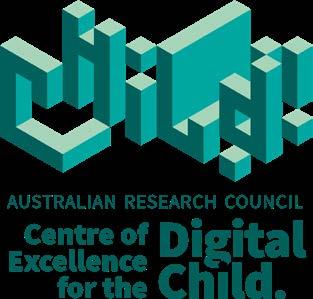

Australian Research Council




Australian Research Council






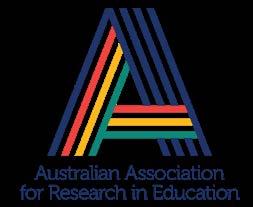

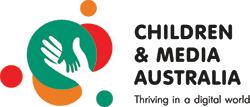



Our partners
Our vision
Our purpose
Our values
Our strategic objectives 2021-2027
Australian Research Council key performance indicators
Our additional outcomes
Our funding
Our governance and organisation structure
Our researcher development plan
Our professional staff development plan
Our research plan
Our research translation plan
Our Communications Outreach and Research Engagement (CORE) plan
Our Equity, Diversity, Justice and Inclusion (EDJI) plan
Our data management plan
Our plan to build and maintain our research partnerships











Our vision
Our purpose
Australian children, healthy, educated and connected in a digital world. We provide evidence-based transdisciplinary research related to children and digital technologies that leads to positive outcomes for children. We aim to enhance public understanding, inform policymakers and provide guidance for families, educators and technology creators to support children to be confident growing up in a rapidly changing digital world.
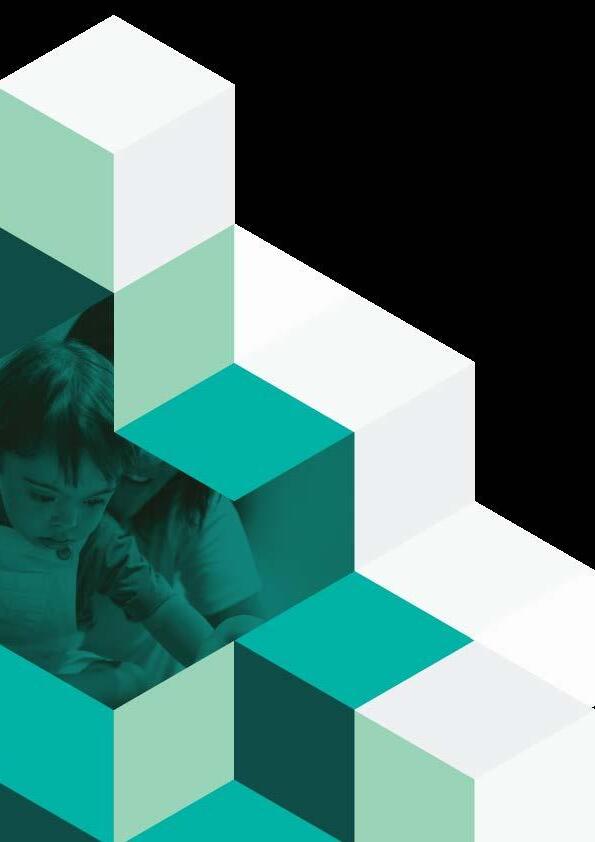
At our heart sits the Rights of Children as expressed through the Australian Human Rights Commission. We believe children have a right to have a say on matters that affect them. We are vigorous advocates and champions for all children and their rights related to the application and use of digital technology, and how research should be undertaken ethically and responsibly.
We start with problems relevant to our stakeholders, partners and participants. We centre the concerns and perspectives of children and their families, educators and communities. We start with deep and authentic consultation and relationship building.
We will navigate the complex landscape of balancing the health, education, safety, and wellbeing issues surrounding children’s use of technology. Our transdisciplinary research brings together researchers across disciplines to create guidelines, policies, practices, resources and materials that support positive digital childhoods.
We utilise our skills and knowledge to strive to be the trusted and respected source regarding children’s use of technology. We develop our staff to be strong communicators of our research findings to the general public, education and health sectors, government, media and industry.
We are conducting the most comprehensive research to the highest ethical standards into children’s use of technology that connects researchers around the world. Evidencebased practice and evidence-informed policy underpin the translation of our research into product design, family, education and care practice, industry and government policy.
Our focus on collaborative relationships and partnerships defines much of our work. Our unique partnership across disciplines, with governments, and with industry partners with global reach is critical to the translation of our research.
We strive for the ethos of ‘the best’, with high expectations of performance, high delivery outcomes, accountable research and academic autonomy in tandem with building supportive and encouraging environments. We value an intellectual agenda that upholds diversity and equity, respects others, and shares mutual values of being open, transparent and inclusive. We uphold the highest ethical standards.
1.
Lead distinctive and cohesive research programs in children’s use of digital technology with global relevance.
• To build new understandings to inform policy and practice and offer solutions and opportunities for the diversity of children, their family and society.
• To explicitly identify that the understandings we build are based on genuine and contemporary real-world challenges, and are responsive to new challenges as they emerge.
• To provide evidence to address the three key problems for children in the digital age:
* Healthy Child: the balance of health challenges of digital technologies in order to optimise the benefits to health and wellbeing, access to knowledge and social interactions that provide opportunities that support physical and emotional health and wellbeing.
* Educated Child: the effective use of digital technologies to optimise learning and access to knowledge through active interactions and development of engaging and thought-provoking technologies.
* Connected Child: the balance of access to social and knowledge connections in the digital world against risks of surveillance, infringements of privacy and child rights.
• The Centre will investigate the opportunities and risks related to the digital child.
• We will develop and run a global-first Longitudinal Family Cohort Study that will investigate the extent, nature, and ongoing influences and effects of Australian children’s engagement with digital technologies.
2.
Translate our research findings to have impact across disciplines, governments, communities, and families.
• We will work with our partners in government and other agencies and institutions to enable our evidence-based research to inform new policy.
• We will work to provide information to inform practice and make well-informed decisions regarding the use of digital technologies at home, at school and during recreation.
• We will work with our partners to enable product development to be informed by our research.
3.
Be recognised and valued by the Australian community as a respected and trusted voice regarding children’s use of digital technology.
• We value the capacity to successfully communicate research outcomes to a broad and diverse audience. We will develop researcher skill and capacity and expect researchers to successfully translate and communicate research to the general public.
• We will produce a portfolio of digital content, discussion papers and press releases to promote community awareness and debate regarding the issues surrounding digital technology by children.
5.
To create and nurture a transdisciplinary research culture that respects difference and values diverse research-informed views.
• We will strive for and continually monitor measures of a productive research culture that expects and respects diverse evidence-informed opinions.
• We will place a high value on strong collaboration and teamwork characterised by a spirit of generosity.
4.
Inspire, equip and mentor the next generation of researchers to examine the impact of current and emerging digital technologies on the lives of children.
• We will measure ourselves and our colleagues against the principles of respectful collaboration, constructive criticism and seeking solutions that exist across established disciplinary approaches. We will not support discipline-defensiveness or blatant self-interest.
• We will establish a purposeful and intentional mentoring program to complement those in partner universities.
• We will develop a career development program for a new generation of researchers.
• We will conduct an annual survey of research staff to monitor the demand for career and research development, and how well this demand is being met.
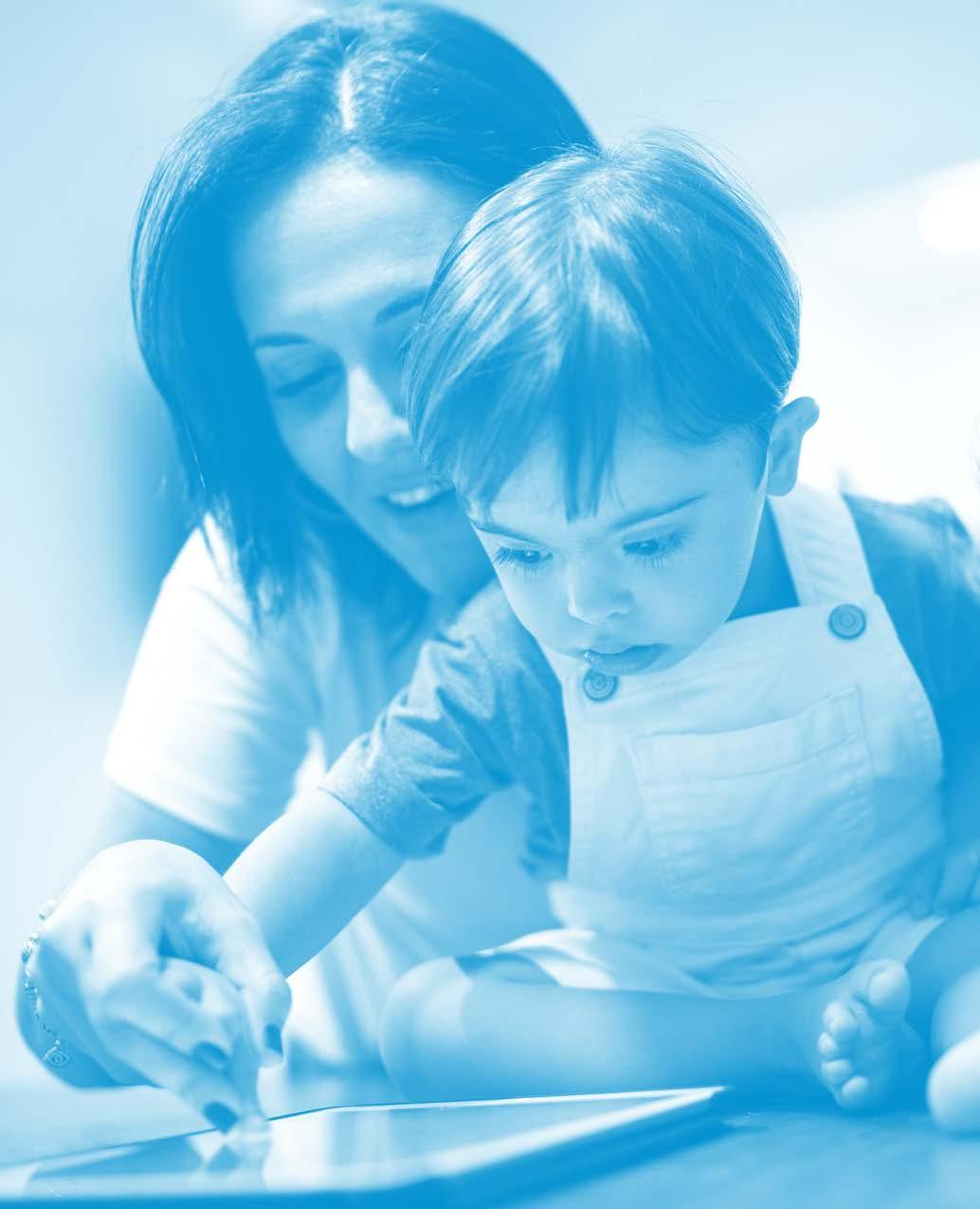
•
Number of new organisations collaborating with, or involved in the Centre •
relationships
Driven by our Australian Research Council key performance indicators, we will contribute substantially to:
*Indicates that the measure is also an Australian Research Council key performance indicator
Outcome
Evidence-based research and research dissemination to optimise children’s use of digital technology
9. Number of female research personnel
• Female percentage
10. Centre-specific KPIs
• Evidence-based resources for end-users (e.g. families, educators, health, professionals)
• Research Fellows and HDR student representation that includes a range of cultural backgrounds
Policy recommendations to inform policy stakeholders about optimising children’s digital experiences
Measurement of our success
Publish research in academic journals, including e-publications, and openaccess publications:
» 30 publications by December 2022*
» 45 publications by December 2023*
Publications with two or more Centre researchers from other nodes:
» 4 publications in 2022
» 8 publications in 2023
» 12 publications in 2024
Ensure that the Centre is represented at major national and international conferences:
» 2 keynote/plenary addresses at national/international conferences per annum
» 30 invited talks by Centre researchers per annum
Become a trusted international authoritative source of information and expert knowledge about children’s use of digital technology. From 2022-2024 we’ll produce:
» 12 press releases or news stories per annum
» 12 presentations/briefings/blogs per annum to the general public*
» 3 Centre responses per annum to large international and national calls for expert advice (e.g United Nations, Green Papers, curriculum reviews)
Engage in relevant forums with parliamentarians, policymakers, and industry stakeholders. From 2022-2024 we’ll deliver:
» 40 presentations/briefings to government (e.g white papers)*
» 32 presentations/briefings to business/industry/end users*
» 32 presentations/briefings to non-government organisations*
» 32 presentations/briefings to professional organisations and bodies*
Build industry engagement through development of researcher capability and opportunities for developing links with external partners including business, government, and not-for-profit industries:
» 1 targeted professional development workshop per annum
Technology innovations that support children’s digital engagement
Curriculum recommendations to enable child-directed digital learning, participation and enjoyment
Measurement of our success
Increase the number of new organisations collaborating with the Centre:
» 2 new academic collaborators in 2022*
» 3 new academic collaborators in 2023*
» 4 new academic collaborators in 2024*
» 2 new industry collaborators in 2022*
» 3 new industry collaborators in 2023*
» 4 new industry collaborators in 2024*
New industry research funding:
» $200K per annum (value of cash and in-kind)
New national competitive grant funding (Category 1)
» 2 new grants/fellowships per annum
Build industry engagement through identifying and supporting research translation opportunities with external partners including business, government, and not-for-profit industries:
» 1 workshop per annum (e.g scoping innovative approaches/ solutions including co-design)
Workshops and professional development on commercialisation and entrepreneurship:
» 1 workshop per annum
Engage with industry to explore opportunities for collaboration:
» 1 industry showcase event per annum
» 1 networking session and joint workshop with industry per annum
Professional learning workshops for educators and preservice educators:
» 2 workshops per annum
Family and educator events/activities aligned with our Children’s Technology Spaces:
» 4 per annum
Open online educational guidelines and resources:
» 3 per annum
Guidelines and resources for parents, educators, and communities, about safe and effective digital engagement
Measurement of our success
Professional outreach publications in professional journals, magazines, newsletters:
» 6 publications per annum
Develop evidence-based resources (e.g families, educators, health professionals):
» 1 resource in 2022, 2 per annum from 2023-2027*
End-user event (e.g Digi-play pop up events) in a public space e.g park, library, museums.
» 2 per annum
Develop and deliver digital content for outreach to a general public audience
» 12 per annum
Build social media presence
» Increase followers by 20% per year across all social media platforms (Twitter, Facebook, and Instagram)
» Social media posts by the Centre:
- 150 in 2022*
- 200 in 2023*
- 250 in 2024*
Utilise national awareness days to promote achievements of Centre research:
» 2-3 initiatives per annum
The funding of the Centre comprises a mix of cash and in-kind contributions.
The cash contributions, while dominated by the Australian university partners, also includes substantial cash and in-kind contributions from Centre partners.
In-kind contributions are more diverse and cut across all finding contributors. Actual values of the respective contributions by sector are presented in Table 1.
A diagrammatic representation of the funding split across the funding partners by cash and in-kind are presented in Diag 1 and Diag 2.
university partners
Queensland University of Technology, University of Wollongong, Curtin University, University of Queensland, Deakin University, Edith Cowan University
International university partners
University of Oslo, Uppsala University, University of Oxford, Gyeongin National University of Education, Erikson Institute, Dublin City University, The London School of Economics and Political Science, Università Cattolica del Sacro Cuore, The University of Sheffield, California State University Long Beach, University College London, Catholic University of Leuven, University of Wisconsin-Madison
Google Australia, Lego Education, Eat More Pixels, SciTech
Department of Education, Creche & Kindergarten Association, Child Australia, Playgroup WA, Special Broadcasting Service (SBS), State Library of Western Australia, Kinderling Kids Radio, The Smith Family, Office of eSafety Commissioner, Australian Human Rights Commission
Early Childhood Australia (ECA), Australian Council on Children and the Media (ACCM), Media Centre for Education Research (MCERA), Australian Association for Research in Education (AARE),
Cash contribution
*Correct at time of publication
Centre organisation chart
Advisory Committee
Australian Research Council
Executive Committee QUT (Administering organisation)
Centre Director
Directorate Director, Deputy-Director, Chief Operating Officer
Data Management Committee Research Committee
Nodes QUT, Curtin, Deakin, ECU, UQ, UoW
Business Operations Business Manager,
Centre Executive Committee
Prof Susan Danby (QUT)
Centre Director
• Overall executive responsibility for Centre performance and success
Directorate
Prof Sue Bennett (UoW)
Deputy-Director
• Supports and advises the Director
• Chair of the Research Committee
Lisa Walker (QUT)
Chief Operating Officer
• Coordinates and manages Centre operations and research support
Node Representatives
• Executive responsibility for the effective functioning of each node
• Represents the interests of the node
The Executive Committee oversees the Centre’s strategic direction and performance against the objectives of the ARC Centre of Excellence scheme and agreed performance targets. The Committee ensures that the Centre’s resources are allocated effectively to achieve these aims.
In addition, the Executive Committee acts as the formal authorising committee for the Centre budget, strategic plan, research projects, project and other partnership agreements, and applications for affiliate status.
Research Committee
The role of the Research Committee is to manage and review the progress of the Centre’s research, and take initiatives to ensure that the Centre’s research is transdisciplinary and cross nodal, strongly aligned with the Centre’s research programs, responsive to the needs of partners and provides opportunities for co-design of new projects with partners.
Healthy
Longitudinal Family Cohort Co-Leaders
Indigenous Advisor
Ethics and Integrity Advisor
Directorate Member
The Data Management Committee oversees the development and implementation of the Centre’s data management plan and technologies for management, protection and integrity of Centre data to enable the Centre to achieve impact across its activities.
Prof Susan Danby (QUT)
Prof Sue Bennett (UoW)
Lisa Walker (QUT)
The Advisory Committee is responsible for adding value and critical input to guide the Centre in delivering its mission. The Committee comprises eminent people from diverse backgrounds and supports the work of the Centre through introductions and network opportunities from their own extensive networks. Chair Centre Director Members Taryn Marks (AIME Mentoring)
Prof Susan Danby (QUT)
Prof Paul Chandler
Adjunct Prof Barbara Comber
Megan Mitchell

The Business Operations team oversees the development and implementation of Centre operations and supports its research aims. This includes data management, finance, governance, reporting, communications and centre-wide initiatives and events.
The Business Operations team is headquartered at QUT, with Support Officers located at each node.
Lisa Walker (QUT)
Chief Operating Officer
Business Manager
ACODA Project Manager
Centre Coordinator
Communications
Node Business Support Officers
Introduction
The Centre of Excellence for the Digital Child is committed to building the next generation of researchers across all the disciplines involved in our comprehensive research program.
Purpose
The purpose of this plan is to communicate a commitment to the professional development of researchers. While many of the staff involved in the Centre are employed at partner universities, the Centre will provide a range of professional development opportunities for our research community.
Objectives
• To actively build a pipeline of the next generation of researchers who can lead research in children’s use of digital technology.
• To be recognised as an exemplar in the development of researchers who work across disciplines, have constructive relationships with government and industry, and focus on translation of research outcomes.
• We will establish a Skills, Mentoring and Research Training (SMART) Portfolio, founded on authentic consultation, to report to the Executive Committee.
• We will develop and implement the SMART Program.
• We will establish a robust and innovative mentoring program that will provide all Centre members the opportunity to develop to grow their career.
• We will offer research leadership skills development to our early and mid-career researchers consistent with the strategy and values of the Centre.
• We will deliver grant writing workshops for our early and mid-career researchers.
• We will, through our partnership with MCERA, provide media training to research and nonresearch members.
• We will deliver opportunities and media training on how to pitch research and how to translate research findings into publicly accessible materials and guidelines.
• We will deliver advanced knowledge development regarding quantitative and qualitative research methodologies.
• We will deliver in-house workshops discussing research impact and the translation of research.
Introduction
The Australian Research Council Centre of Excellence for the Digital Child requires, and is committed to, developing a high-powered professional workforce to partner with the academic workforce to enable its vision to be realised.
Strategies 2021/22
• We will run professional development workshops annually to develop the skills of all Centre professional staff.
• We will encourage and support internal and external skill development opportunities.
Objectives
To establish, support and develop a group of professional staff with a strong understanding of the research domain of the Centre who can ensure the Centre meets its organisational goals.

• We will encourage and provide funding support for professional staff to attend the annual Australasia Research Management Society (ARMS) conference (or similar).
• We will engage in communities of practice within the Centre of Excellence network.
Introduction
Digital technologies are rapidly changing. They are used with, and accessed by, even very young children. Yet, knowledge about the extent and nature of Australian children’s engagement with digital technologies at the beginning of life have not been well documented at population level. A central objective of
the Centre of Excellence for the Digital Child is documenting and tracking population patterns of digital engagement in the early years of life, and their effects on the healthy, educated, and connected development of young children. To this end, the research across the Centre is underpinned by an overarching Longitudinal Family Cohort Study and three thematic programs (Healthy Child, Educated Child, and Connected Child), each with three subprograms (see Diag 3). The research problems addressed through the Centre are not reduced to any single disciplinary perspective. The projects are designed as transdisciplinary in approach and conduct, with researchers collaborating across nodes, disciplines and programs.
The Longitudinal Family Cohort Study is designed to provide the big picture; to identify potential problems and unmet possibilities associated with digital technologies in early childhood. Population studies can identify policy and practice ‘hot spots’ for detailed investigation, with the aim of informing problem solutions and opportunity optimisation for the diversity of Australian children, their families and society. The design of the longitudinal study sits on
solid, rigorous, and established methodologies, and builds in agility and feedback loops, especially open to concerns and issues raised by and through our partners recognising that digital technologies, patterns of engagement with these technologies, and knowledge about information harvesting are varied and rapidly changing. The study will link with secondary data sources (for example, data from the Longitudinal Study of Australian Children and the Longitudinal Study of Indigenous Children).
During the first year of operation of the Centre, the establishment of the Longitudinal Family Cohort Study will be organised. This will include data strategy development, ethics planning and recruitment consultation with key partners, stakeholders and communities. The second year will see recruitment of subjects for Wave 1. Wave 2 will commence in Year 4. (See Diag 4.)
The major social problem addressed in this program is that current Australian education and health policies are in conflict. The health and education sectors have differing guidelines regarding digital technology use by young children. Education and industry authorities encourage young children to be proficient users of digital technology to enable them to thrive in a digital world. Health authorities, on the other hand, discourage young children from using screen based digital technology due to concerns for physical, cognitive, emotional, and social well-being. A major component of this conflict is the lack of highquality evidence about the positive and negative health and well-being effects associated with contemporary digital technology use (such as tablets and smart phones) by young children and the ways these should be navigated.
The overall aim of the Healthy Child program of research is to build new understandings about the digital influences on children’s health, development and well-being, and other strategies to improve outcomes for children. This program will (a) assess the developmental and well-being consequences of children’s interactions with digital technologies in the short and long term, (b) develop and test processes, products and services to improve the quality of children’s engagement with digital technologies, and (c) explore emerging and future technologies for their potential to support and promote children’s development, cognition and language, and health and well-being.
The aim of the Educated Child program is to advance understandings of how children in diverse communities participate in digital learning and explore how participation might engage with curriculum guidelines and school-like practices. From these understandings, researchers will develop models, frameworks, technology innovations and good practices of digital learning that build children’s educational opportunities, fostering inclusiveness and equitable outcomes.
This program will use immersive multimodal approaches that capture children’s detailed and nuanced interactions with a range of digital devices, including tablets and other digital learning resources. As well as engaging directly with children in the Longitudinal Family Cohort Study, approaches include testing the efficacy of digital learning models and resources through experiments, video ethnographies, eye tracking of learning strategies, and learning interventions. Children will be invited to co-research and collaborate on a range of issues arising in the Centre’s work, including the codesign of new technologies, operating as digitally connected citizen scientists.
Children who face a range of opportunities and challenges across rural and urban contexts will be actively recruited across remote, rural and urban locations in communities of diverse socioeconomic resources, and who have diverse languages, social and cultural background, ethnicity, citizenship, family structure, education experiences and access to digital resourcing and materials.
The Connected Child research program investigates the important issues associated with the children’s use of internet and mobile technology focusing on three key areas: data analytics, online engagement and commercial influences. Increasingly, children are socialising and playing in a digital context. They see the world emerging around them through search engines, and platforms such as YouTube, Instagram, Steam, and instant messaging services. However, there has been limited coordinated research that focuses on the impact that pervasive networked technology has on our young children. Nor have we realised the full potential of such connectedness.
The connectivity of digital technology has the potential to create new forms of community and civic life and simultaneously pose dangers to privacy, introduce new forms of social inequity, and exploit
children. Growing up using digital technologies offers new ways to connect with family and friends, yet also creates new risks.
The overall aim of the Connected Child is to:
• create understandings of digital technology use and produce technology innovations for young children that shape positive relationships with peers, family, community, and government and commercial entities
• respect children’s privacy, rights, and citizenship
• advance knowledge about the role of companies and government as big data penetrates everyday family life.
Table 2 shows the research program as outlined in the successful grant application, which will be reviewed on an annual basis in light of changing technology, knowledge and community needs.
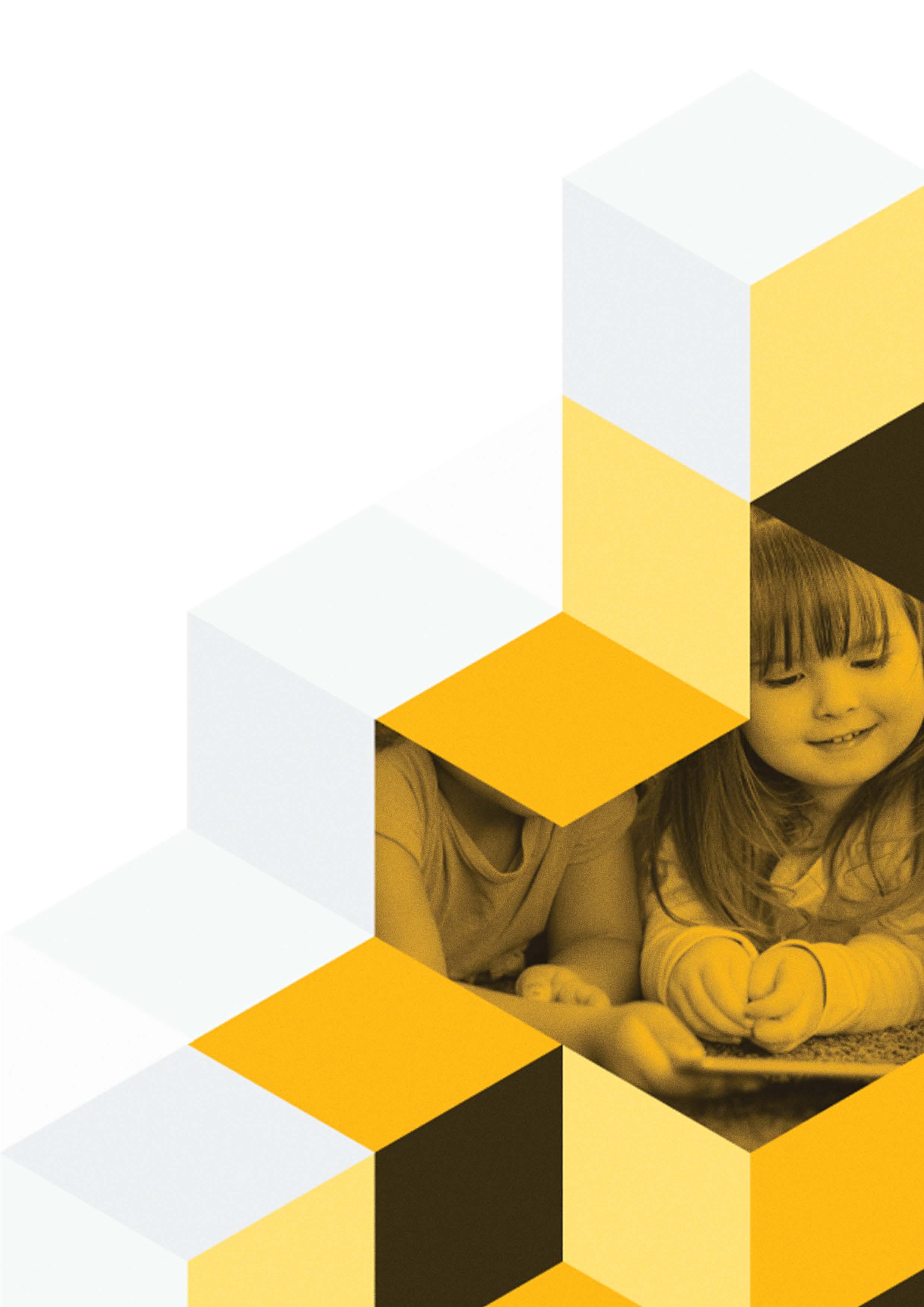
As outlined in the successful grant application, which will be reviewed on an annual basis in light of changing knowledge and community needs.
1.1 Screens and physical Wellbeing
1.2 Language and cognition
1.3 Video games and children’s wellbeing
Screens and physical wellbeing
Identify associations between technology use and physical development/wellbeing outcomes, as reported by parents and as tracked using digital data analytics.
Investigate how different technologies influence children’s patterns of physical engagement
Language and cognition
Parent -reported family technology use will be related to parent-reported language and cognitive development outcomes.
Examine how families use digital technology in ways that enhance or inhibit child language.
Video games and wellbeing
Prospective study patterns of video game play will examine associations with child characteristics (i.e selfregulation).
Explore the potential moderating effects of aspects such as family structure.
Screens and physical wellbeing
Observational study of several hundred children wearing sensors to monitor sleep, sedentariness and physical activity for a week. Gross motor coordination conducted to assess impact of digital screen use on adiposity, sleep, movement and coordination.
Examine language interactions as families engage with and within digital devices. Establish strengths and weaknesses in attention, language, writing and communication when using a range of digital devices, products, and services.
Active digital engagement programs
Targeted family case studies to investigate children’s screen time activities, to determine patterns of use that result in active physical engagement.
Identify characteristics of active interactions and developing guidelines and recommendations.
Visual processing and cognition
Examine visual processing by children when provided with screen and other devices in home environment. Use eye-tracking technology to measure visual processing activity with different digital technology/screen designs.
Video games and wellbeing
Manipulate game features to develop an understanding of the mechanisms underlying psychosocial impacts of video game play including emotional self-regulation, delayed gratification and the capacity to disconnect and walk away from the technology.
Videogames and pro-social behaviour
• Examine the socioemotional impact of gameplay experiences of several hundred children using interviews and in-game data analyses.
Examine the extent to which game play supports social connectedness and social capital.
Screens and physical wellbeing
Examine impact of screens on sleep and physical wellbeing using specialist sleep laboratory facilities.
Explore differential effects of screen use duration, time of day, light spectra, and content on day and nighttime sleep disturbance.
Digital design to support language development
Examine technology designed to encourage shared attention, language and communication between children and their families when provided with screen devices.
Establish design criteria that support positive language interactions.
Videogames and wellbeing
Examine children’s neurophysiological responses to gaming experiences.
Develop and evaluate parental programs to support children’s emotional and behavioural self-regulation.
Active digital engagement
Examine the effectiveness of programs designed to support parents in promoting active technology use with children. Develop new technology to support these programs and gather evidence related to the efficacy of these programs/ technologies
Digital design to cognitive development
Examine technology designed to encourage concentration and problem solving. Investigate link between physical and digital environments using innovations such as tangible user interfaces and augmented reality.
New gaming technology and children’s wellbeing
Examine new gaming technology (i.e different input devices, VR headsets) to understand the influences that different modes of input and output have on children’s wellbeing.
Focus on how designed interactivity can result in positive wellbeing outcomes.
Children @ Home: Everyday learning in the digital world
Identify how families use digital technology to engage in learning at home.
in digital worlds
2.1 Learning in diverse settings
2.2 Digital technology design to inform learning
Examine how children in diverse communities participate in digital learning and how parents seek guidance and support.
Examine the family context as a lens to understand environmental, cultural and contextual influences on digital practices at home.
Digital technology to inform learning
Focus on how, when and why children use existing technologies in formal learning contexts.
Determine modes, type and quality of interactions. Learning outcomes will also be interrogated.
Active learning and play in digital worlds
2.3 Active learning and play in digital worlds
3.1 Data analytics and the digital child
CONNECTED Living in digital worlds
Identify digital technologies perceived by parents and carers to support creativity, curiosity, inquiry, problem solving, and knowledge production.
Identify unifying characteristics and/or salient features.
Children @ Home: Everyday learning in the digital world
Conduct an ethnographic observational analysis of diverse families from within the Longitudinal Cohort. Focus on everyday rituals and routines and how digital technologies influence behaviours.
Children @ Home: Everyday learning in the digital world
Observations and interviews with approx. 100 families to examine how technological advances are changing the way families engage in learning in parks, museums, libraries, cafes, etc.
Children @ Home: Everyday learning in the digital world
Examine the role of the broader community in children’s engagement with digital technology. Uncover and resolve issues of access and barriers to use associated with community-oriented experiences.
Expressing ideas through digital technology
Investigate classroom use of digital technologies that children can use to create written and visual communication. Focus on literacy outcomes, meaning making and engagement.
Active learning and play in digital worlds
Use in-family observations that investigate digital play through the possibilities for adult-child shared activities (i.e interactive story making).
Playing and learning with apps
Investigate learning outcomes that emerge from using popular software applications. Examine apps designed for educational purposes and those designed for recreational purposes.
Active learning and play in digital worlds
• Investigate who children explore using digital knowledge bases and technology for peer learning to find stimulation and ideas for problem solving in collaborative learning experiences.
Expressing ideas through digital technology
Examines the effectiveness of digital technology for STEM. Design and evaluate new technology innovations and teacher resources to address gaps identified and supported learning.
Accessible interactions and university design for learning
Examine the effectiveness of new technology designed to support children’s engagement in family-based routines and rituals. Focus on children who struggle with attending to tasks, social interactions and communication, structuring daily activities, etc.
Play and learning beyond apps
Examine the value of technology ‘loose-software-andhardware-parts’ that can be used by children to design their own technology solutions for play and learning. Analyse outcomes from different school settings using tech kits developed by partners.
Children’s Makerspaces
Investigate interactions within child-orientated makerspaces. Focus on the opportunities provided by ‘maker technology’ for creating, collaboration, trial and error, failing etc. Positive findings will be incrementally incorporated into maker programs, and updates to spaces, resources and activities will be evaluated on an ongoing basis.
The life of data
Explore data flows and practices across domestic, commercial, educational and health contexts.
Examine digital trace data that emerges from children’s interactions with various platforms, as well as schoolbased standardised testing, platforms and apps.
Track policy change and conduct international comparisons.
The life of data
Targeted case study of family clusters to collect information (bi-annually) about engagement with digital platforms and institutions that are mining and sharing data about children. Include survey and audit methods to explore the landscape of data collection with early years and school sectors related to children.
Becoming digital citizens
Identify children’s emerging online practices and investigate the risks and opportunities.
Analysis of longitudinal study data to reveal differences in family dynamics in use of online applications, interactions that maintain and deepen family relationships, and the distribution and ownership of connected devices.
Data analysis designed to reveal practices of early adopters.
Identify children’s commercial relationships with digital products and services. Map patterns and variations in the use of digital platforms and services, identifying digital trends and evolving children’s cultures.
Investigate how marketing of food, toys and games influences interactions and behaviours within families.
Targeted case studies of families (or equivalent) will provide insight into how online risks and opportunities emerge. Examine children’s practices while engaging in online contexts, and how these practices are facilitated through family, care and education settings. Investigate how children and families manage and prioritise digital interactions.
Examine specific trends in digital platform/technology use (i.e the use of YouTube).
Collect data over a three-year period to understand how interactions with commercial digital products and services evolve over time.
Digital rights in the quantified child
Apply human-in the-loop approaches to data analytics to ensure data relevant, transparency and comprehension.
Investigate how authentic partnerships between children and data leads to improved insight and action.
• Children will work as co-researchers to address issues of digital rights and safety.
Targeted case studies of clusters of families engaged in online activities that promote positive interaction and communication practices.
Research examines occurrences of unsettling content/ interactions and how these are dealt with.
Focus on identifying characteristics of safe and kind interactions.
Examine children’s use of networked physical objects such as toys.
Examine how the use of such IOT technology creates commercial relationships and influences family interactions.
Examine in-depth popular toys identified in the longitudinal study.
The life of data
Observations and interviews with children, teachers and carers to investigate in detail the nature of digital data collection.
Intensive case studies will focus on digital platforms that are used in family settings, childcare centres and early years education.
Becoming digital citizens
Engage with a small number of families with very young children to explore the conditions in which children develop autonomous choice around digital activities.
Examine children’s self-initiated communication practices using digital technologies.
Engage 15-20 families to examine how commercial interests shape children’s connections with technologies at home and in -care and education settings. Plot the ways in which children incorporate commercially focussed data and behaviours within play, learning and wellbeing contexts.
Digital rights and the quantified child
Apply human-in the-loop approaches to data analytics to ensure data relevance, transparency and comprehension. Investigate how authentic partnerships between children and data leads to improved insight and action. Children will work as co-researchers to address issues of digital rights and safety.
Working with the Children’s Reference Panels, investigate the perspectives of children regarding their parents’ digital technology use. Laboratory work will capture children’s ideas about design for positive online interactions and working in shared contexts.
Advance our understanding of how the IOT may be designed to create safe and valued play experiences. Work with children as co-designers to investigate novel solutions to support intergenerational play, facilitate cross-cultural engagement, engage with families with disabilities, etc.
Introduction
One major objective of the Centre of Excellence for the Digital Child is to translate research findings where appropriate. The translation of research into products, policy or practice requires a dedication to relationship building and an intense understanding of the context in which the research outcomes will be applied. While many research centres will seek to translate their research into product development or government policy, the Centre of Excellence for the Digital Child also seeks to translate their research into community attitudes and ‘family policy’.
The Centre is committed to the translation of its research into various settings and must deliberately plan for this to happen. The Centre will provide evidence-based resources and information will be communicated to children/the public through public media channels. We will be ready to respond to parliamentary inquiries whenever there is an opportunity.
Purpose
The purpose of this plan is to explain how this complex task of translation across industry, government and community will be undertaken.
Our objectives
• To establish research projects that include a high expectation, from both researchers and research partners, to translate the research outcomes that optimise children’s use of digital technologies.
• To embed the expectation of the translation of research outcomes, when and where appropriate, across our research domain.
• To allow our research agenda to be informed, but not driven by, the needs of our research partners.
• To become trusted sources of reliable, evidencebased information that addresses the ‘whole child’.
Strategies 2021/2022
• We will establish strong internal processes that ensure the communication of our research outcomes is, when necessary, set within the context of other research from the Centre. This approach will ensure that our messages across disciplines are not contradictory, but rather are complementary, and combine to support children to be healthy, educated and connected in a digital age.
• We will endeavour to ensure that our research is translated where it matters most in addressing the digital divide and in disadvantaged groups.
• We will strategically plan for significant translation of our research to influence:
• practice guidelines for educators and new methods for teaching children with special needs.
• new knowledge to inform government policy makers for healthy use of digital technologies for different age groups (e.g an initial policy review or white paper)
• revised policy and guidelines regarding access, privacy and balanced engagement.
• approaches to support children to be more agentic and to engage positively with digital technologies.
• We will establish our ‘brand’ as a trusted source of evidence-based information for the general public on matters relating to children’s use of digital technology. We will collaborate with our media partners for media generation, and contribute to media debates giving voice to the evidence and creating more well-informed citizens.
Strategies 2021/2022
• We will establish a Communication, Outreach and Research Engagement (CORE) Portfolio, founded on authentic consultation, to report to the Executive Committee.
• We will create a profile of our flagship research projects to build community interest in the outcomes.
Introduction
The Centre of Excellence for the Digital Child acknowledges that our research will attract very strong community interest. There is strong concern within the community about the time that children are spending on screen-based activity. Compounding this concern is the inconsistent, and sometimes contradictory, information being distributed from different sources.
Purpose
The purpose of this plan is to communicate a commitment and plan to develop strong engagement with our industry, the academic community, and the broader community throughout the life of the Centre.
Our objectives
To become a trusted international authoritative source of information about children’s use of digital technology.
For our research outcomes to be widely available, easily accessible, and simple to understand.
• We will build positive relationships with media organisations to ensure we are sought for comment on key issues.
• We will establish a constructive social media presence.
• We will establish a portfolio of publications accessible across our stakeholder groups comprising different publications, namely:
• Reviews of existing knowledge.
• Discussion Papers and blogs to address topics, raise questions and contribute constructively to the community debate.
• Reports or Guidelines Papers that are informed by Centre research findings on complex matters to help the public understand the issue, and consider solutions and innovative practices.
• Publications to top-tier journals and book publishers about the new knowledge and findings developed through the Centre research program.
• Newsletters, resource development, and other publication activities so that they are accessible to stakeholder groups.
Introduction
The Centre of Excellence for the Digital Child is committed to building an internal culture and an external approach to our research that demonstrates dedication to the principles of Equity, Diversity, Justice and Inclusion (EDJI).
Purpose
The purpose of this plan is to communicate a commitment to the principles of Equity, Diversity, Justice, and Inclusion and to outline a plan of action to ensure that key goals are met by the Centre of Excellence for the Digital Child.
Our objectives
Our research will set a global standard in child research ethical practice. Our organisational partnerships to be led by policies that ensure equitable, diverse, just, and inclusive practice. Our organisational culture is characterised by constructive, and collaborative personal relationships that reflect respectful engagement, and good EDJI practice is valued and recognised.
Strategies 2021/2022
• We will establish core policies to ensure we meet our stated objectives.
• We will set up mechanisms for complaints and address the behaviours as well as support anyone experiencing discrimination, harassment, or inappropriate behaviour.
• We will offer training and programs to support equity, diversity, justice and inclusion.
• We will ensure that recruitment advertisements use inclusive and unbiased language, and selection and interview panels reflect the diversity in the community.
• We will encourage participation from diverse groups at all levels within the Centre.
• We will ensure diverse and inclusive language and images in any communications within the Centre and to the Centre’s audience.
• We will support flexible workplace practices, including alternative working hours and meeting times, video-conference options, and working from home arrangements.
• We will develop strategies to increase employment/involvement of members of underrepresented groups.
• We will monitor and map the representation of diverse populations in our multiple research projects to ensure our commitment to diversity and inclusion throughout our research.
• We will establish processes to hear the voices, perspectives, concerns and aspirations of children in key areas across our research.
• We will establish an Equity, Diversity, Justice and Inclusion Implementation Portfolio founded on authentic consultation, to report to the Executive Committee.
Introduction
Data management is a strategic issue for the Centre because of the amount of data that will be generated during our research, and the sensitivity associated with access to this information.
Purpose
The purpose is to communicate a blueprint to ensure appropriate and necessary investment in the establishment and maintenance of data capture, management, storage, and retrieval systems to ensure best-practice data integrity and security.
Our objectives
• Our data storage and retrieval systems are appropriate and scalable for the nature of our research.
• All our researchers, university, industry partners and families are confident in the security of the data.
Strategies 2021/2022
• We will develop an Integrated Centre Data Management Plan that outlines what research data will be created in the Centre.
• We will investigate and choose a storage system e.g. platform that ensures that data storage in Australia is secure, and accessible to the relevant Centre members (including university, public sector, industry and other organisations).
• We will develop a data governance framework that outlines data access and licensing under the Foundation Agreement. This framework will include e.g standard procedures and guidelines to support the ongoing implementation of the Plan.
• We will build a detailed inventory of the Centre’s core systems and information assets that are held in these platforms systems - identify data owners, data custodians, access provisions, system owners, and teams and processes.
• We will liaise with relevant data-focused individuals/groups across the Centre to implement the Data Management Plan and to determine Centre-wide data standards.
• We will undertake regular risk assessments for Centre data activities.

Our plan to build and maintain our research partnerships
Introduction
Our research partnerships are critical to our success. They provide the Centre with access to resources, information, data and participants. The Centre’s relationship with our research partners must be characterised by reciprocity, transparency and accountability.
Purpose
The purpose of this plan is to continually cultivate and nurture strong research partnerships.
Our objectives
• To develop enduring relationships with our partners during and between formal research partnerships.
• To establish a strong understanding of the strategic context in which our research sits for our research partners.
• To ensure our research with our industry partners is strategically relevant and provides clear value to our partners.
Strategies 2021/2022
• All our partner relationships will be supported by a partner letter and project agreement outlining expectations of both parties.
• Each of our partner relationships will be supported by a single ‘partner custodian’ who has primary responsibility for the maintenance of the working relationship. This primary contact ensures a lack of duplication and a more efficient relationship that may span several research domains.
• We will conduct events for our partners where we brief all partners on the progress of our comprehensive research program.
• From early in the life of the Centre we will document, with the help of our research partners, examples of ‘research impact’ that are both planned and opportune.
• We will provide information to our clients about our research that will make it easy for this information to be easily communicated throughout their organisation.
• We will endeavour to develop deep and engaged relationships with our partner organisations.
• We will establish industry internships and joint appointments in university and partner organisations leading to fertilisation of ideas and knowledge.
This page has been left intentionally blank
STRATEGIC PLAN 2021 - 2027
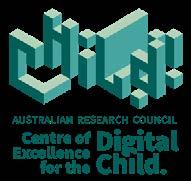
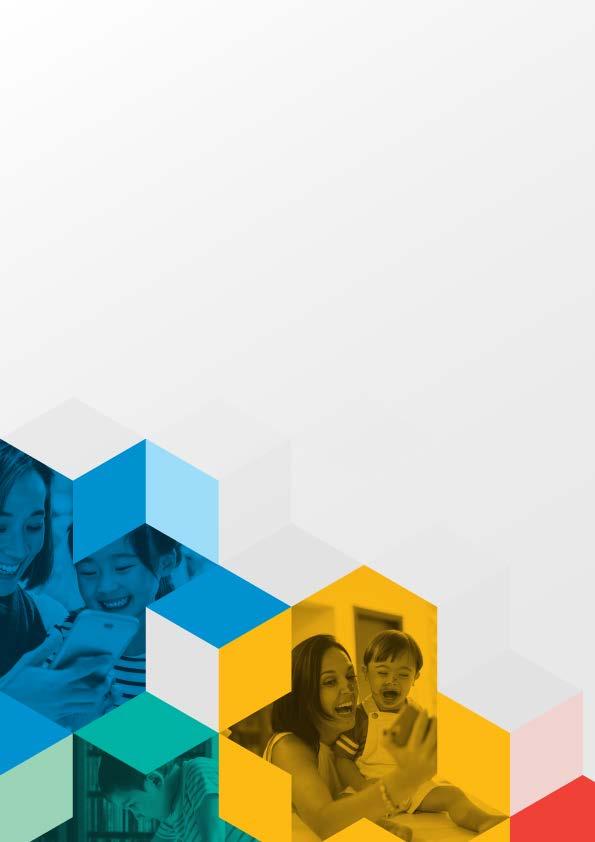
 Australian Research Council
Australian Research Council